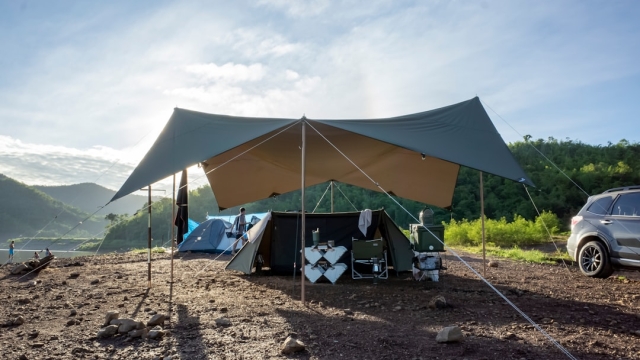
In the dynamic world of event planning, the versatility and adaptability of portable event structures have become essential. Whether hosting a corporate gathering, a festival, or a private celebration, these structures provide the flexibility needed to create a unique and functional space. With various options available, understanding the different types of portable event structures and their benefits can significantly enhance the planning process.
Types of Portable Event Structures: Tents, Stages, and Booths
Portable event structures come in several forms, each serving specific purposes. Tents are perhaps the most common portable structures, providing shelter from the elements while allowing for customizable layouts. They range from simple canopies to elaborate marquee tents that can accommodate large crowds.
Stages are another critical component of portable event structures. They can vary in size and design, allowing for performances, speeches, or presentations to take center stage. A well-constructed stage enhances visibility and acoustics, making it an integral part of any outdoor or indoor event.
Booths, often used for trade shows or fairs, offer a way to showcase products or services. These structures can be easily assembled and disassembled, perfect for temporary displays. With branding opportunities available, booths can significantly elevate an organization's visibility during an event.
Benefits of Using Portable Event Structures for Various Events
The advantages of utilizing portable event structures are numerous. First and foremost, their flexibility allows event planners to adapt to different venues and layouts. This adaptability is crucial when dealing with outdoor settings where weather conditions can be unpredictable. Tents provide protection from rain and sun, creating a comfortable environment for attendees.
Additionally, portable structures often require less time for setup and takedown compared to permanent installations. This efficiency can be a significant advantage when working under tight time constraints. Moreover, these structures can often be customized to fit the theme of the event, enhancing the overall experience for guests.
How to Choose the Right Portable Structure for Your Event
Choosing the right portable event structure requires careful consideration of various factors. Start by assessing the specific needs of your event, including the number of attendees, the type of activities planned, and the venue's characteristics. For example, if your event features live performances, a stage will be essential. Conversely, a trade show may require multiple booths for exhibitors.
Additionally, consider the logistics of setup and breakdown. Some structures are easier to manage than others, so understanding the capabilities of your team can influence your decision. Finally, keep in mind the aesthetics of the structure, ensuring it aligns with the event's theme and branding.
Cost Considerations: Renting vs. Buying Portable event structures
When it comes to acquiring portable event structures, planners often face the choice between renting and buying. Renting can be a cost-effective solution for one-time events, as it allows access to high-quality structures without the upfront investment. Many rental companies provide comprehensive packages that include setup and dismantling services, which can save time and effort.
On the other hand, purchasing portable event structures may be more beneficial for organizations that host multiple events throughout the year. Owning the equipment allows for greater flexibility in planning and can ultimately lead to cost savings in the long run. However, it's essential to factor in storage and maintenance costs when considering this option.
Maintenance and Setup Tips for Portable Event Structures
Proper maintenance and setup of portable event structures are crucial to ensure their longevity and functionality. Before an event, inspect all components for any signs of wear or damage. Ensure that tents are clean and free of debris, and that stages are stable and secure.
During setup, follow the manufacturer's guidelines closely, especially regarding anchoring and securing the structures. Having a dedicated team for setup can streamline the process and help avoid mistakes. After the event, promptly dismantle and clean the structures to prevent any long-term damage.
In conclusion, portable event structures play a vital role in creating flexible and adaptable environments for various events. With careful planning and consideration, selecting the right structures can significantly enhance the overall experience for both organizers and attendees. For more information on various options available, check out this resource that offers a range of portable structures suited for any event.

